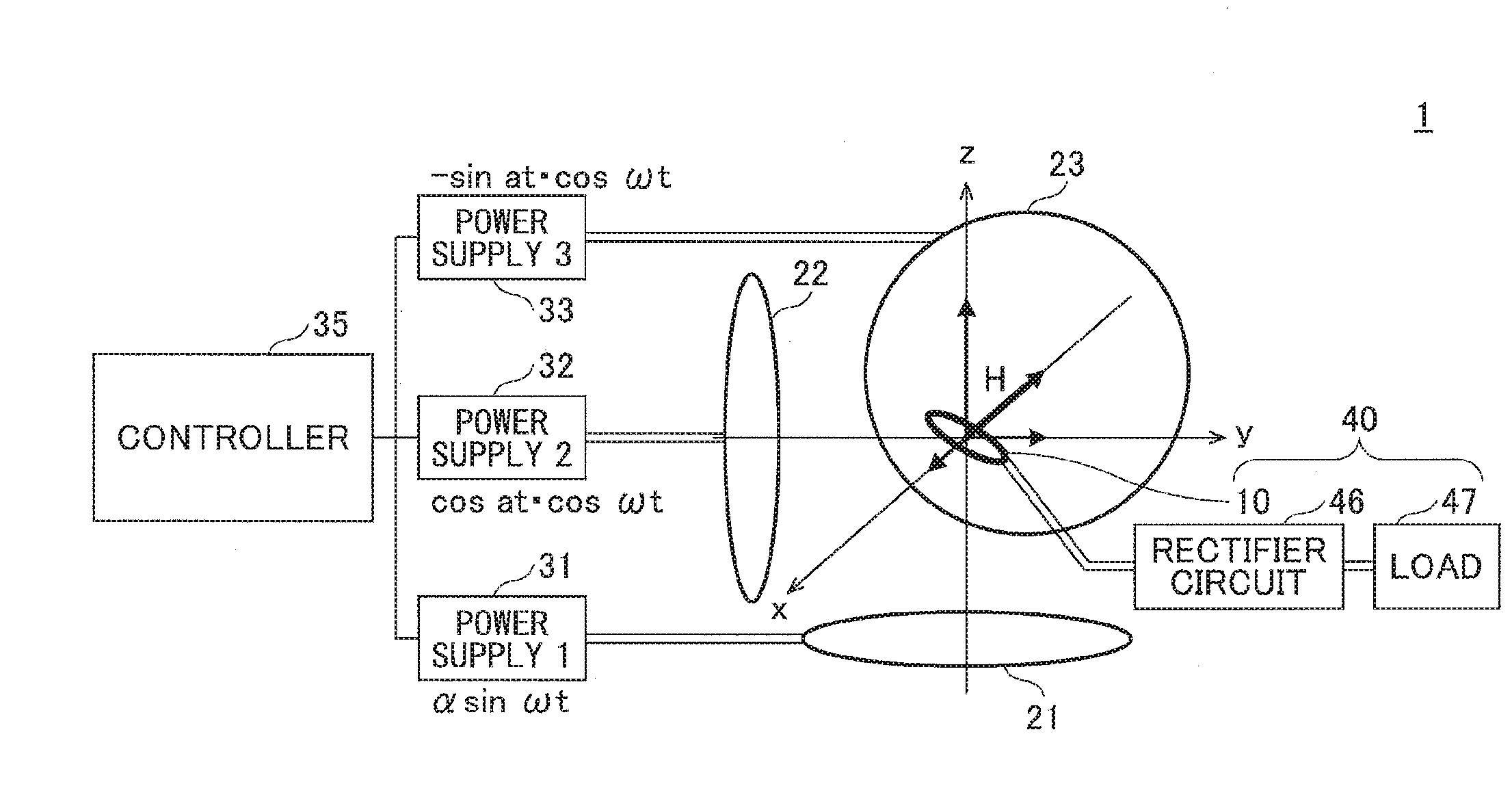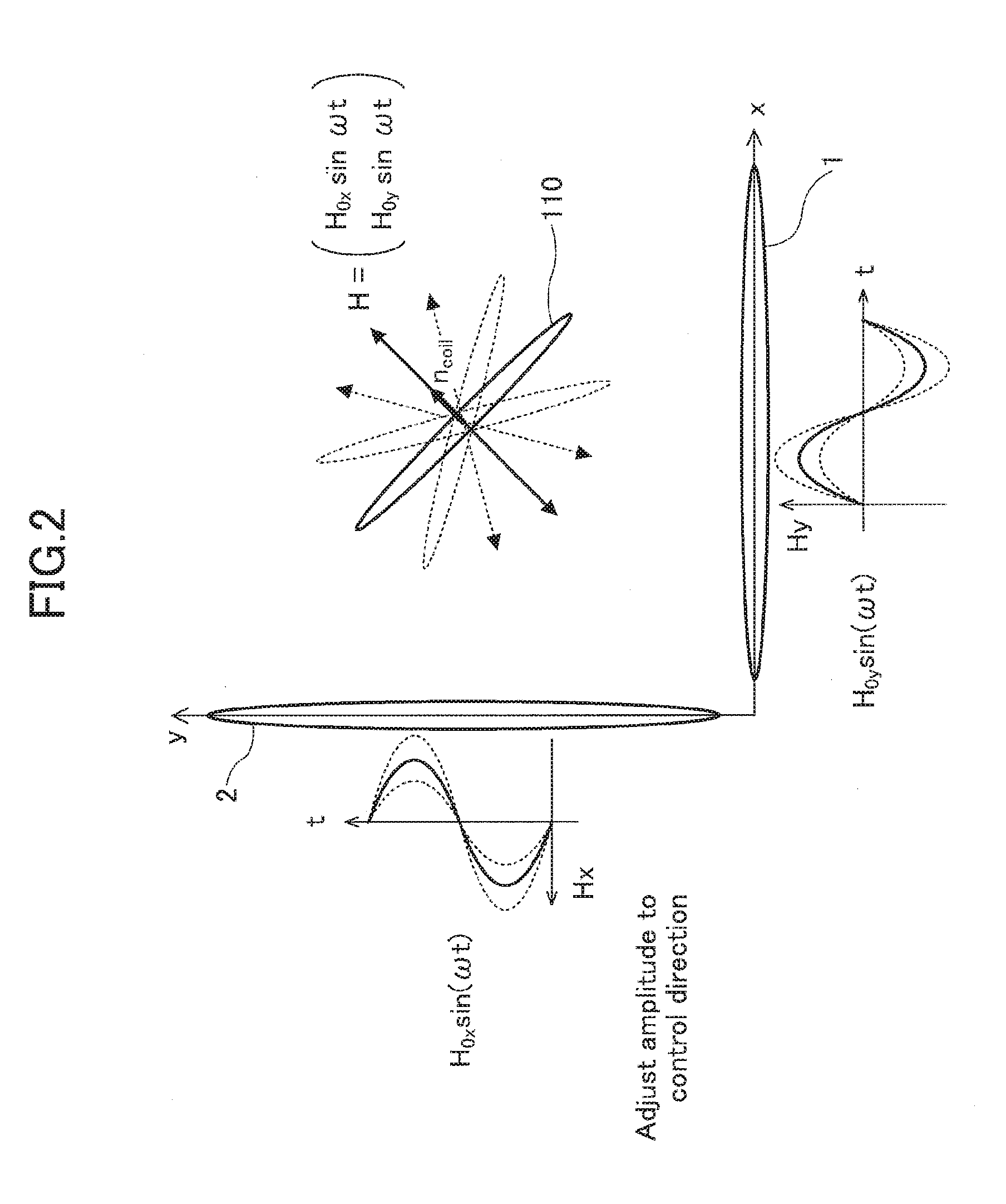Wireless power transfer system and wireless power transfer method
- Summary
- Abstract
- Description
- Claims
- Application Information
AI Technical Summary
Benefits of technology
Problems solved by technology
Method used
Image
Examples
first embodiment
[0030]FIG. 3 illustrates a synthetic magnetic field produced using three transmit coils 21, 22 and 23. The transmitter coil 21 is arranged such that the normal vector n21 points the z direction, which coil generates a magnetic field H21. The transmitter coil 22 is arranged such that the normal vector n22 points the y direction, which coil generates a magnetic field H22. The transmitter coil 23 is arranged such that the normal vector n23 points the x direction, which coil generates magnetic field H23.
[0031]When transferring energy by electromagnetic induction, electric current flows in a receiver coil 10 by electromotive force when magnetic field fluxes represented by a synthetic magnetic field vector H generated by the magnetic fields H21, H21 and H23 penetrate the plane of the receiver coil 10. However, when the synthetic magnetic field vector H becomes parallel to the plane of the receiver coil 10, electric energy cannot be transferred to the receiver coil. Similarly, with magneti...
second embodiment
[0043]In the first embodiment, the synthetic magnetic field vector H rotating in a plane (e.g., in the y-z plane) is further rotated about an axis of rotation (e.g., about the z-axis) perpendicular to the normal vector nH1 of the plane of rotation of the synthetic magnetic field vector H. The oscillating power induced in the receiver coil 10 is rectified as it is and converted into DC power.
[0044]As long as, in the above-explained example, the normal vector to the plane of receiver coil 10 resides in the x-y plane (perpendicular to the z-axis serving as the axis of rotation of the normal vector nH1), the received power does not depend on the azimuth angle or the orientation of the receiver coil 10.
[0045]However, when the normal to the plane of the receiver coil 10 tilts toward the z direction, the received power level changes depending on the z component of the synthetic magnetic field. This will be explained in more detail, referring to FIG. 5A and FIG. 5B.
[0046]As illustrated in F...
PUM
 Login to View More
Login to View More Abstract
Description
Claims
Application Information
 Login to View More
Login to View More - R&D
- Intellectual Property
- Life Sciences
- Materials
- Tech Scout
- Unparalleled Data Quality
- Higher Quality Content
- 60% Fewer Hallucinations
Browse by: Latest US Patents, China's latest patents, Technical Efficacy Thesaurus, Application Domain, Technology Topic, Popular Technical Reports.
© 2025 PatSnap. All rights reserved.Legal|Privacy policy|Modern Slavery Act Transparency Statement|Sitemap|About US| Contact US: help@patsnap.com



